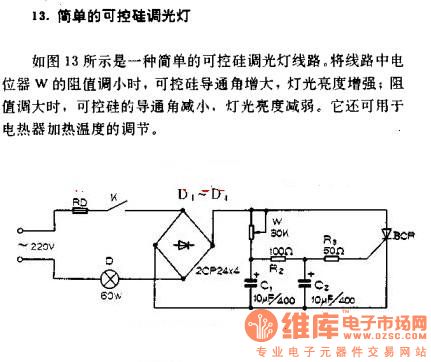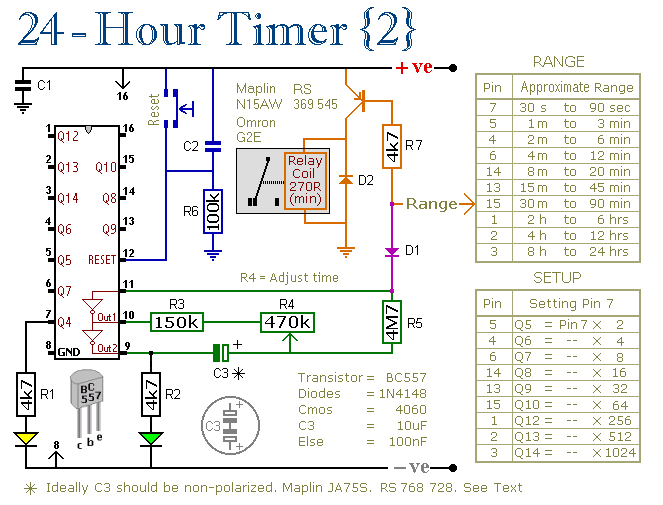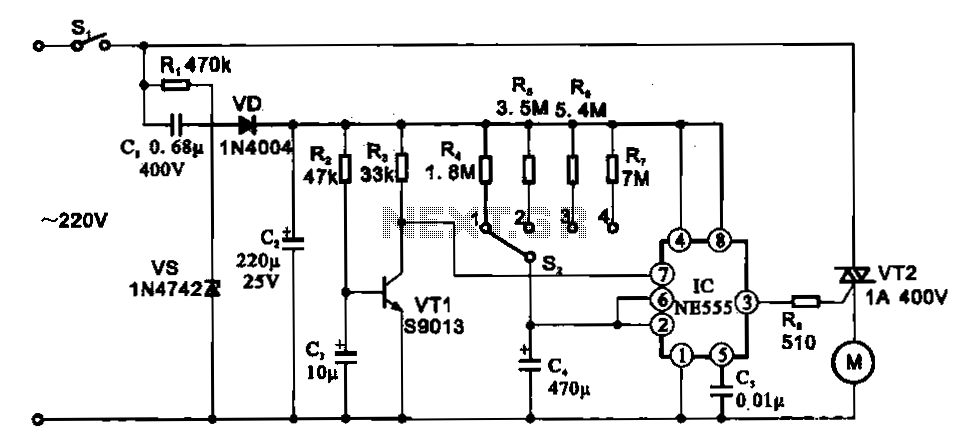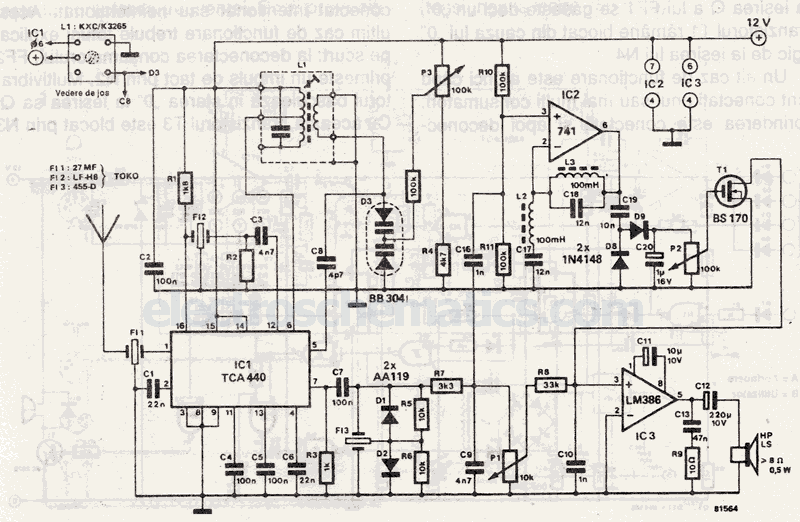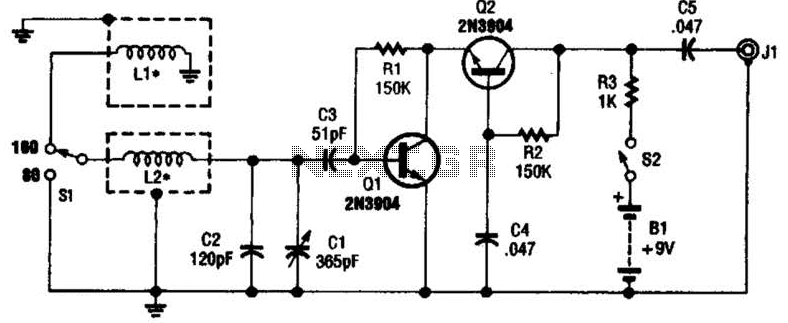
High resistance distribution circuit
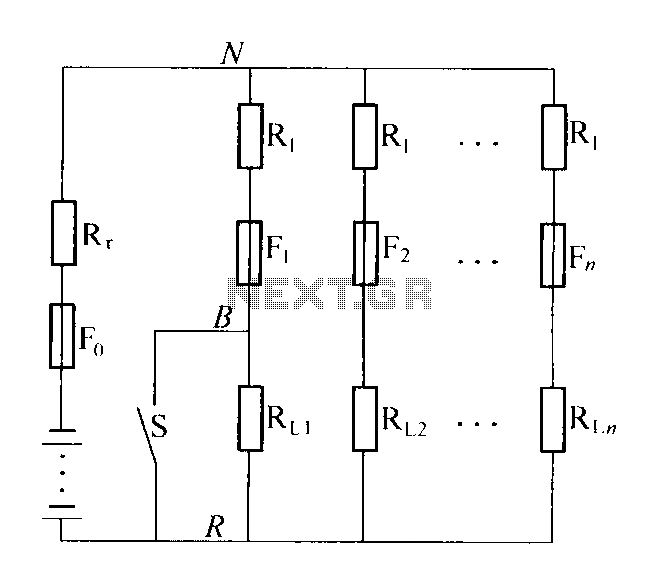
The circuit diagram illustrates a high-impedance distribution system characterized by low resistivity distribution. A notable feature is the series resistance of the shunt load current limiting resistor R1, typically valued at five to ten times the internal resistance of the battery. In the event of a short circuit shunt, the system experiences minimal voltage drops and recoil spike voltage due to R1's limitation on the short circuit current, which also results in a reduced di/dt. The schematic indicates voltage variation across N and R. By appropriately matching R1 and Rr, the voltage change across R can be maintained within the permissible error range of the power supply system, ensuring that the loads remain independent of one another. This multi-purpose shunt configuration enhances the reliability of the communication system. In practical applications, this design can be adapted for multi-stage high-impedance power distribution systems.
The high-impedance distribution circuit is designed to maintain stable voltage levels across various loads while minimizing the impact of short circuit conditions. The resistor R1 serves as a critical component in this configuration, providing current limiting functionality that protects both the power supply and connected loads from excessive current during fault conditions. The selection of R1 at a value significantly higher than the battery's internal resistance ensures that, during a fault, the circuit can effectively control the flow of current, thereby reducing the risk of damage to sensitive components.
The interaction between R1 and the shunt resistor Rr plays a vital role in voltage regulation. By carefully selecting these resistances, the voltage stability across the system can be achieved, allowing for consistent performance across all loads. The schematic representation of voltage variation across N and R illustrates how these resistors work in tandem to manage voltage drops and ensure that the system operates within safe limits.
Furthermore, the implementation of a multi-stage high-impedance power distribution system allows for scalability and versatility in various applications. This design can be particularly beneficial in communication systems, where reliability and consistent performance are paramount. The ability to adapt the circuit for different load requirements while maintaining high impedance ensures that the system can handle varying power demands without compromising performance. Overall, this high-impedance distribution circuit is an effective solution for enhancing the reliability and efficiency of modern electronic systems.As shown in the circuit diagram of a high-impedance distribution. It is with low resistivity distribution of certain significant difference is the series resistance in the shunt load current limiting resistor R1, the general value of five times the battery internal resistance ~ l0 times. At this time, if a short circuit shunt occurs, and the system voltage drops are small recoil spike voltage, because R1 limits the short circuit current, and L di / dt is also small sake.
As shown in Figure is N, R schematic voltage variation. Matching the appropriate R1 and Rr, can make N, the voltage change between R within the permissible error range power supply system so that the system load between each independently of each other. Multi-purpose play a shunt to improve the reliability of the communication system. In practical applications, it can evolve out of a multi-stage high-impedance power distribution applications.
The high-impedance distribution circuit is designed to maintain stable voltage levels across various loads while minimizing the impact of short circuit conditions. The resistor R1 serves as a critical component in this configuration, providing current limiting functionality that protects both the power supply and connected loads from excessive current during fault conditions. The selection of R1 at a value significantly higher than the battery's internal resistance ensures that, during a fault, the circuit can effectively control the flow of current, thereby reducing the risk of damage to sensitive components.
The interaction between R1 and the shunt resistor Rr plays a vital role in voltage regulation. By carefully selecting these resistances, the voltage stability across the system can be achieved, allowing for consistent performance across all loads. The schematic representation of voltage variation across N and R illustrates how these resistors work in tandem to manage voltage drops and ensure that the system operates within safe limits.
Furthermore, the implementation of a multi-stage high-impedance power distribution system allows for scalability and versatility in various applications. This design can be particularly beneficial in communication systems, where reliability and consistent performance are paramount. The ability to adapt the circuit for different load requirements while maintaining high impedance ensures that the system can handle varying power demands without compromising performance. Overall, this high-impedance distribution circuit is an effective solution for enhancing the reliability and efficiency of modern electronic systems.As shown in the circuit diagram of a high-impedance distribution. It is with low resistivity distribution of certain significant difference is the series resistance in the shunt load current limiting resistor R1, the general value of five times the battery internal resistance ~ l0 times. At this time, if a short circuit shunt occurs, and the system voltage drops are small recoil spike voltage, because R1 limits the short circuit current, and L di / dt is also small sake.
As shown in Figure is N, R schematic voltage variation. Matching the appropriate R1 and Rr, can make N, the voltage change between R within the permissible error range power supply system so that the system load between each independently of each other. Multi-purpose play a shunt to improve the reliability of the communication system. In practical applications, it can evolve out of a multi-stage high-impedance power distribution applications.
